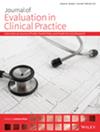Facilitating Access and Adherence to Physical Activity and Exercise for Service Users With Neurological Conditions in the Community: A Service Evaluation
Abstract
Rationale
Many service users with neurological conditions do not meet the recommended physical activity requirements. Cultivating early and ongoing access to physical activity and exercise opportunities is vital to improve or maintain function and general health in this vulnerable group.
Aim
To evaluate the impact of a pathway that aimed to facilitate access and adherence to physical activity and exercise for service users with neurological conditions.
Methods
A London-based NHS healthcare team providing community neurorehabilitation developed a pathway in co-production with public health, local authority, third sector parties and service users to facilitate physical activity and exercise opportunities. First, NHS neurophysiotherapists offered a bespoke programme on exercise, physical activity and education to service users for up to 12 weeks. The pathway continued in local gyms, supported by a fitness instructor, for at least a further 12 weeks. Using a pre–post design, outcomes relating to function, strength and physical activity were recorded at baseline, 6–12 weeks (health care) and 6 weeks later (telephone survey after transition to local gyms). Data analysis was descriptive.
Results
Thirty-five service users (20 men), mean (SD) age 60 (15), with a range of neurological conditions, were eligible and included. Ten participants dropped out: eight (23%) for medical reasons, two (6%) for other reasons. Due to the COVID-19 pandemic, four (11%) service users could not transition when facilities closed in March 2020. Analysis showed potential beneficial effects on function, strength and physical activity for service users as well as reduced waiting times to access the NHS and local gyms.
Conclusion
Outcomes suggested the pathway enabled service users to access and adhere to physical activity and exercise following neurorehabilitation. This evaluation included small numbers but could inform service development and future studies.


 求助内容:
求助内容: 应助结果提醒方式:
应助结果提醒方式:


